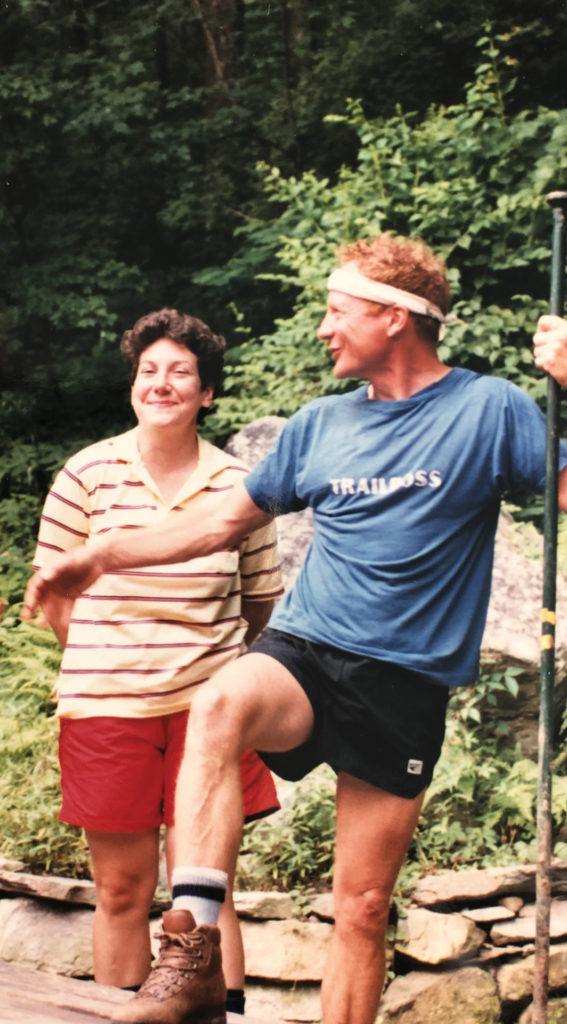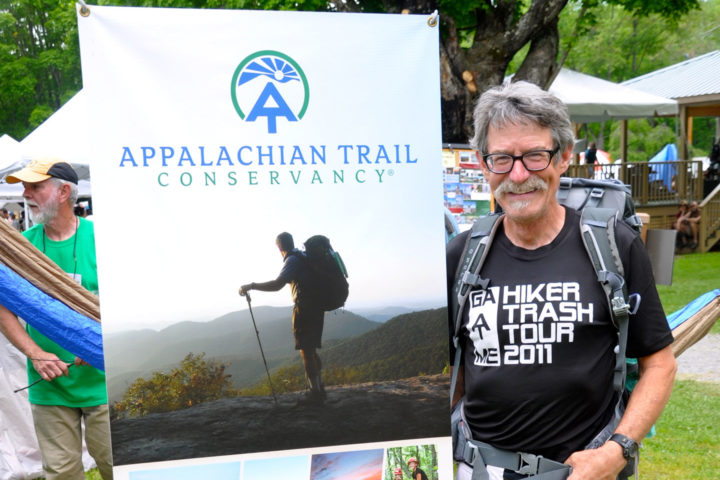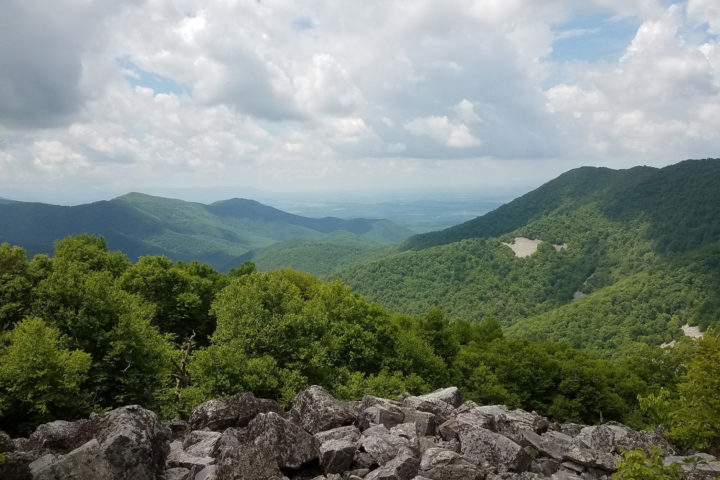By Sandi Marra, ATC President & CEO
Reflections at the Start of the ATC’s Centennial Year
January 9, 2025
Hiking isn’t what drew me to the Appalachian Trail. My passion for the outdoors and this special place first took root as a volunteer. I still remember how I felt when I was handed my first saw in the mid-80s. It was incredible to be treated equal, despite being a young woman among experienced male volunteers. I love my memories of those early days, building shelters with the Potomac Appalachian Trail Club, and of course getting hooked on hiking.

Sandi and Chris (“Trailboss”) doing Trail work at Blackburn Trail Center in the 1990s.
I find myself reflecting a lot lately, and it’s not just because it is the start of a new year. It’s the start of 2025 — the Appalachian Trail Conservancy’s Centennial celebration.
Since 1925, the ATC has led the management and conservation of the Appalachian Trail and its landscape — a sanctuary from the modern world where nature thrives and people can connect with its transformative power. Each year, the A.T. landscape draws millions of visitors, serves as a critical wildlife corridor and refuge for thousands of diverse species, and plays a vital role in driving climate resilience and economic vitality in neighboring communities.
Countless volunteers, partners, groups and supporters have generously given their time, talents and resources to build, protect and improve the Appalachian Trail and its surrounding landscape over the last century. They are the giants on whose shoulders we now stand. Throughout this milestone year, we’ll celebrate the people who blazed and strengthened the A.T. and the moments that make up the ATC’s rich history as stewards of this national treasure.
Over the last 100 years, the scope of the ATC’s mission has grown and evolved, just as the Trail itself and the ways in which people use this beloved recreational resource have changed. The ATC’s early years were dedicated to building the world’s longest, continuous hiking-only footpath across the spine of the Appalachian Mountains. Inspired by Benton MacKaye’s groundbreaking vision published in 1921, the A.T. is an iconic symbol of American ingenuity and perseverance and an inspiration for long-trail creation around the world.
Our second chapter focused on efforts to achieve permanent protection of the treadway and the 1,000-foot corridor surrounding the A.T. through the National Trails System Act and the 1978 amendments.
In the third chapter, the ATC evolved into a unifying entity by bringing organizations, private and public partners, and thousands of volunteers together through leadership, expertise, resources, and passion to effectively manage the entire A.T. and conserve the surrounding landscape. Our work in this area continues with efforts to enhance protection for this backbone for ecological diversity, critical wildlife migration corridor, and world-renowned wilderness experience.
And now, in our fourth chapter, the ATC is dedicated to ensuring the Trail experience is as safe and rewarding as possible and that the A.T. is a place where all people can connect with nature. This requires us to pay close attention to how people are using and sometimes overusing the Trail and identifying ways in which we can establish more sustainable and safe features and access points, like overnight sights and trailhead improvements.

“Legolas” and “Rockman” relax at the Fontana Dam Shelter. Photo by Michael “Ishkabibbel” Nieves (@kryptic_blue)
With the cleanup from Hurricane Helene still underway, it’s also our responsibility to implement strategies to build resilience into the A.T. treadway, infrastructure and surrounding habitat as part of the restoration work so they can better weather more intense and frequent weather events.
At the same time, it requires us to recognize and thoughtfully address the systemic barriers that make experiencing this free and incredible resource difficult for people who are living down the street or miles away in urban areas. Much of this depends on providing opportunities for youth, neighbors and visitors — whether they consider themselves outdoorsy or not — to learn about the Trail and how to responsibly enjoy it.
These goals are among our top priorities outlined in the ATC’s 2025-2027 Strategic Plan, which reinforces our commitment to protecting the Appalachian Trail and its landscape, cultivating an inclusive community of visitors and stewards, and fostering respect and support for this national treasure.
As we embark upon the ATC’s Centennial year, I’m excited to celebrate the successes of the past and step into the next century with a renewed sense of resolve to tackle the challenges along the journey. Together, we can ensure a vibrant, resilient and welcoming Appalachian Trail experience for all for the next 100 years.

Sandi Marra
President & CEO
Discover More

JOIN TODAY
Become a Member
Membership benefits include an oversized Appalachian Trail strip map, a subscription to our membership magazine A.T. Journeys, discounts at the Ultimate A.T. Store®, special volunteer opportunities and invitations to exclusive events.

Supporting the ATC
Ways to Give
Learn about the numerous ways you can support the work of the ATC to protect the Trail you love.

Know Before You Go
Hiker Preparation Series
Before heading out to the Appalachian Trail for your long-distance hike, check out our hiker preparation series for tips and checklists on how to have a safe and enjoyable A.T. experience.
